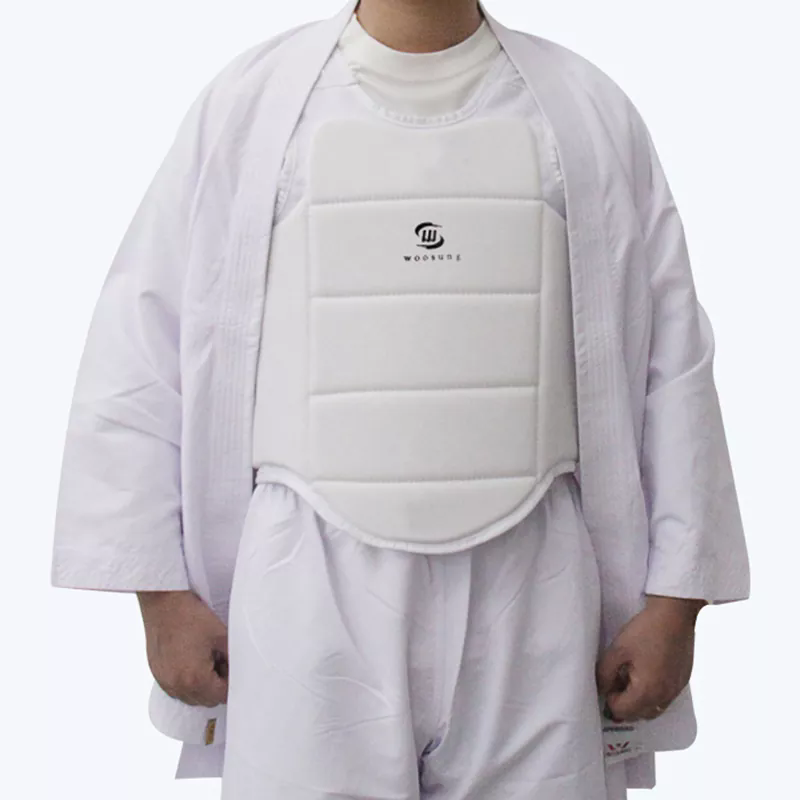Karate Equipment: Essential Gear for Training and Competition
2025-03-18
Karate is a powerful and disciplined martial art that requires strength, speed, and precision. Whether you're a beginner or an experienced practitioner, having the right karate equipment is essential for safety, comfort, and effective training. From protective gear to practice weapons, every piece of equipment plays a crucial role in enhancing performance and reducing injury risks.
In this blog, we will explore the essential karate equipment, their importance, and how to choose the best gear for training and competition.
1. Karate Uniform (Karate Gi)
The karate gi is the traditional uniform worn by karate practitioners. It consists of a jacket (uwagi), pants (zubon), and a belt (obi).
Features of a Good Karate Gi:
Material: Typically made of cotton or a cotton-polyester blend for durability and comfort.
Weight:
- Lightweight (6-8 oz): Best for beginners and casual training.
- Medium-weight (10-12 oz): A balance of durability and flexibility.
- Heavyweight (14-16 oz): Ideal for advanced practitioners, offering better snap and structure.
Fit: Should allow free movement while maintaining a professional appearance.
Tip: If you train frequently, invest in a high-quality, pre-shrunk karate gi to avoid excessive shrinkage after washing.
2. Karate Belt (Obi)
The karate belt system represents a practitioner’s rank and skill level. Beginners start with a white belt, progressing through different colors until reaching the black belt (dan ranks).
Choosing the Right Karate Belt:
Length: Should wrap around the waist twice and leave enough space for tying.
Material: Cotton belts are more durable and hold their shape longer.
Color Progression: Varies by karate style (Shotokan, Goju-Ryu, etc.), but common ranks include:
- White (Beginner)
- Yellow, Orange, Green (Intermediate levels)
- Blue, Brown (Advanced levels)
- Black (Expert & Mastery levels)
Tip: Always tie your belt properly to maintain a neat and professional look.
3. Protective Gear for Karate
Safety is a priority in karate, especially in sparring (kumite). The right protective equipment reduces the risk of injuries and ensures safe training.
Essential Protective Gear:
Karate Gloves (Kumite Mitts): Protects the knuckles and fingers while allowing flexibility.
Shin and Instep Guards: Absorb impact from kicks and blocks.
Mouthguard: Prevents injuries to the teeth and jaw.
Headgear (Helmet): Protects against head and face injuries during sparring.
Groin Protector: Essential for male practitioners to avoid serious injuries.
Chest Protector: Commonly used in tournaments, especially for women and younger students.
Tip: Choose lightweight yet durable protective gear that does not restrict movement.
4. Karate Training Equipment
In addition to protective gear, karate practitioners use training equipment to improve their skills, power, and technique.
Must-Have Training Tools:
Punching Bag: Improves punching and kicking power.
Kick Pads & Focus Mitts: Helps refine striking accuracy and speed.
Wooden Dummy: Used in traditional training to develop strength and precision.
Balance Board: Enhances stability and footwork.
Jump Rope: Increases endurance, agility, and coordination.
Tip: Focus on drills using kick pads and punching bags to develop explosive power and proper technique.
5. Practice Weapons for Karate
Although karate is primarily an empty-hand martial art, some styles incorporate weapon training (Kobudo) to enhance skills.
Popular Training Weapons:
Bo Staff: A long wooden staff used for defense and striking techniques.
Nunchaku: A traditional Okinawan weapon used for speed and coordination drills.
Sai: A three-pronged metal weapon used in advanced karate training.
Tonfa: A baton-like weapon used in kata and self-defense applications.
Tip: Always train with foam or rubberized weapons before transitioning to wooden or metal versions.
6. Karate Mat (Tatami Mats)
Karate training requires a safe and cushioned surface to prevent injuries during falls, rolls, and sparring.
Choosing the Right Karate Mats:
Material: EVA foam or rubber for shock absorption.
Thickness:
- 1-2 cm: For basic training.
- 3-4 cm: For advanced sparring and competition.
Interlocking Design: Easy to assemble and store.
Tip: Clean mats regularly to maintain hygiene and prevent slipping.
7. Karate Tournament Equipment
If you plan to compete in karate tournaments, ensure you have the approved gear that meets competition standards.
Competition Essentials:
- WKF or local federation-approved karate gi.
- Official karate gloves, shin guards, and groin protectors.
- Mouthguard and headgear (if required).
- Karate competition belt (based on category: red or blue).
Tip: Always check tournament regulations before purchasing equipment to ensure compliance.
Final Thoughts
Whether you're practicing karate for self-defense, fitness, or competition, having the right karate equipment is crucial for safety, performance, and training efficiency. From a high-quality karate gi to proper protective gear and training tools, investing in the best equipment will help you progress faster and enjoy the art of karate.



